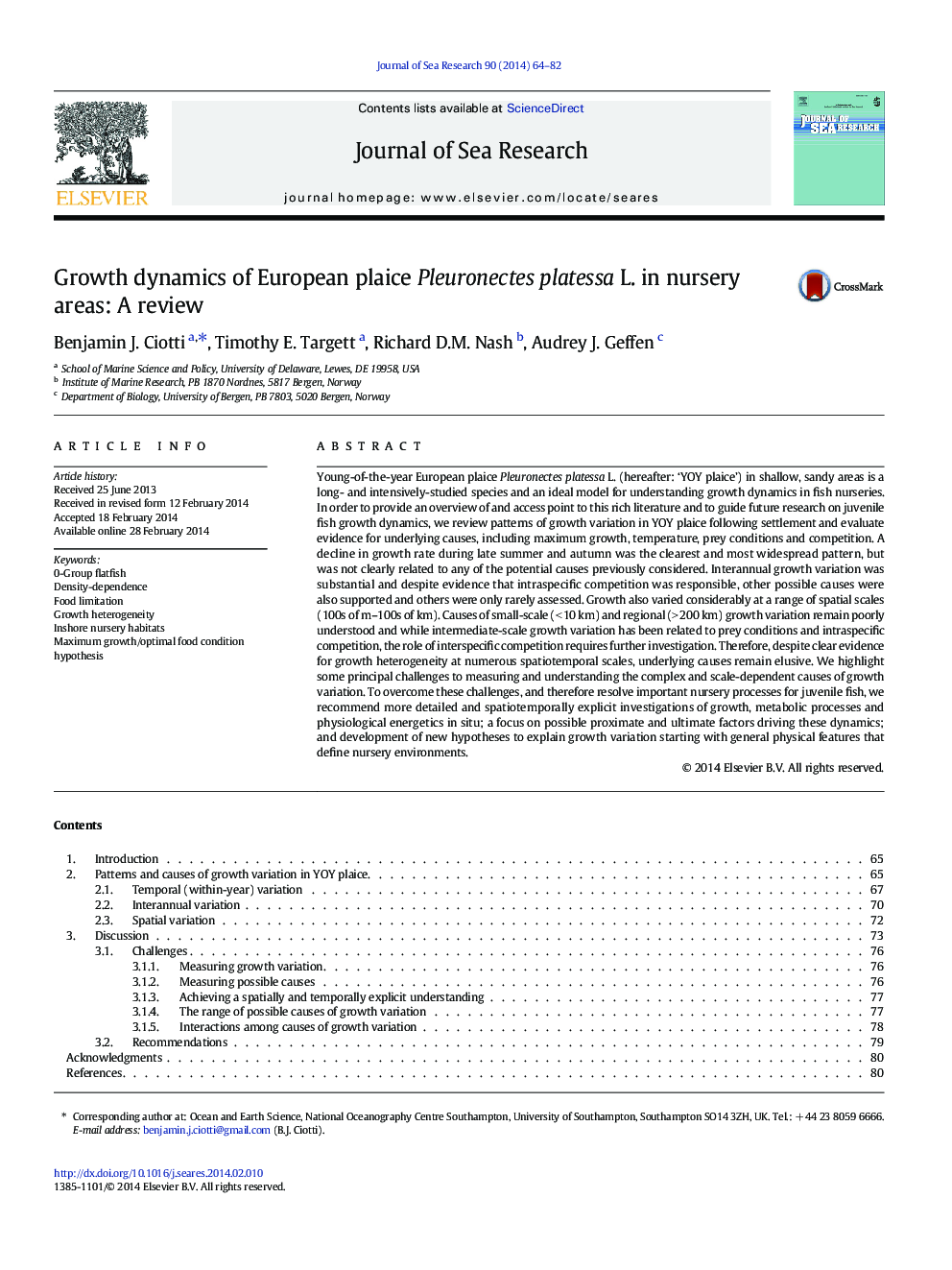| Article ID | Journal | Published Year | Pages | File Type |
|---|---|---|---|---|
| 4549800 | Journal of Sea Research | 2014 | 19 Pages |
•We review juvenile plaice growth dynamics research over the past half century.•Declining growth during summer was the clearest, most widespread pattern observed.•Variation among years and at a range of spatial scales was also substantial.•Causes for growth patterns were inconsistent and often elusive.•We identify challenges and approaches to understanding fish nursery growth dynamics.
Young-of-the-year European plaice Pleuronectes platessa L. (hereafter: ‘YOY plaice’) in shallow, sandy areas is a long- and intensively-studied species and an ideal model for understanding growth dynamics in fish nurseries. In order to provide an overview of and access point to this rich literature and to guide future research on juvenile fish growth dynamics, we review patterns of growth variation in YOY plaice following settlement and evaluate evidence for underlying causes, including maximum growth, temperature, prey conditions and competition. A decline in growth rate during late summer and autumn was the clearest and most widespread pattern, but was not clearly related to any of the potential causes previously considered. Interannual growth variation was substantial and despite evidence that intraspecific competition was responsible, other possible causes were also supported and others were only rarely assessed. Growth also varied considerably at a range of spatial scales (100s of m–100s of km). Causes of small-scale (< 10 km) and regional (> 200 km) growth variation remain poorly understood and while intermediate-scale growth variation has been related to prey conditions and intraspecific competition, the role of interspecific competition requires further investigation. Therefore, despite clear evidence for growth heterogeneity at numerous spatiotemporal scales, underlying causes remain elusive. We highlight some principal challenges to measuring and understanding the complex and scale-dependent causes of growth variation. To overcome these challenges, and therefore resolve important nursery processes for juvenile fish, we recommend more detailed and spatiotemporally explicit investigations of growth, metabolic processes and physiological energetics in situ; a focus on possible proximate and ultimate factors driving these dynamics; and development of new hypotheses to explain growth variation starting with general physical features that define nursery environments.
